


xxxxxThe Italian electrical engineer Guglielmo Marconi developed an interest in wireless telegraphy after studying the work of the Scottish physicist James Clerk Maxwell and the German physicist Heinrich Hertz. By a series of experiments and constant modification of various components, he managed to send a Morse code signal over more than a mile in 1895, and three years later, working in England, he succeeded in establishing communication across the English Channel, a distance of over 30 miles. The big and decisive break through came in 1901, however, when a signal was transmitted from Cornwall, in southern England, to Saint John’s in Newfoundland, Canada. This success awoke the world to the potential of wireless, and the radio industry, led by his Wireless Telegraph Company, developed rapidly. The first radio message from England to Australia was made in 1918, and in the 1920s Marconi began work on a communication network for the British Commonwealth, employing a shortwave system. His career was not without controversy. A number of scientists claimed, with just cause, that he had patented work that they had invented, and others that in the 1890s they had sent wireless messages for distances comparable to those he had achieved. However, it was generally accepted that he had made marked improvements to the system, and that, unlike most of his contemporaries, he alone had gone out purposefully to make wireless telegraphy a workable, commercial enterprise.
GUGLIELMO MARCONI 1874 -
Acknowledgements
Marconi: by the
Pach Brothers, a photographic studio founded in New York City in
1867 – Prints and Photographs Division, Library of Congress,
Washington. St.John’s: contained in an
article entitled Marconi’s Achievement
in the American illustrated monthly periodical McClure’s
Magazine (1893-
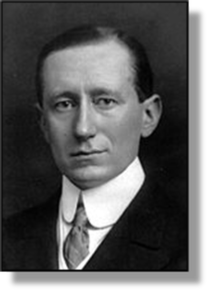 xxxxxThe Italian electrical engineer Guglielmo Marconi was
one of the leading pioneers in the development of radio, and the
inventor of the first practical radio-
xxxxxThe Italian electrical engineer Guglielmo Marconi was
one of the leading pioneers in the development of radio, and the
inventor of the first practical radio-
xxxxxMarconi was
born in Bologna, northern Italy, the second son of Giuseppe
Marconi, a wealthy Italian landowner, and Annie Jameson, daughter
of an Irish Protestant family. He was educated privately in
Bologna and Florence, and then attended the technical institute in
Leghorn. It was while studying physics at this coastal town that
he came into contact with the theory of electromagnetic radiation,
the discovery of the Scottish physicist and mathematician James
Clerk Maxwell, and with the experiments carried out in the late
1880s by the German physicist Heinrich Hertz into wireless
telegraphy -
xxxxxAs early as
the age of 16, Marconi, was showing a particular interest in
wireless telegraphy. Working at his father’s estate at Pontecchio
near Bologna, indoors and later in the grounds, he repeated some
of the experiments carried out by Hertz, and soon found that by
earthing the transmitter and receiver, and by insulating the
aerial and extending its height, he could substantially increase
the distance of transmission. By 1895,
placing metal sheets around the antenna to narrow the beam -
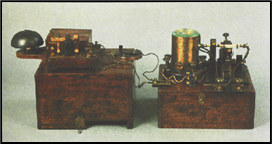 xxxxxIn 1896 he travelled to England and, after he had
patented his system, the first of its kind, he gained the interest
and support of William Preece, the chief electrical engineer of
the British Post Office. The following year he formed his own
company in London, the Wireless Telegraph and Signal Company, Ltd.
(changed in 1900 to Marconi's Wireless Telegraph Company, Ltd.)
and set about establishing the first radio factory at Chelmsford
in Essex. There then followed a series of attempts to extend the
reach of the signal and prove that wireless telegraphy was,
indeed, both practical and commercially viable. In 1897 he sent a
Morse code signal nearly four miles across Salisbury Plain and
almost ten miles across the Bristol Channel. Then in August 1899
communication was established across the English Channel, a
distance of over 30 miles, and the following month two U.S. ships,
equipped by Marconi, sent back to New York the progress of the
international yacht race for the America’s Cup. This played an
important part in arousing worldwide interest, and led to the
establishment of the American Marconi Company.
xxxxxIn 1896 he travelled to England and, after he had
patented his system, the first of its kind, he gained the interest
and support of William Preece, the chief electrical engineer of
the British Post Office. The following year he formed his own
company in London, the Wireless Telegraph and Signal Company, Ltd.
(changed in 1900 to Marconi's Wireless Telegraph Company, Ltd.)
and set about establishing the first radio factory at Chelmsford
in Essex. There then followed a series of attempts to extend the
reach of the signal and prove that wireless telegraphy was,
indeed, both practical and commercially viable. In 1897 he sent a
Morse code signal nearly four miles across Salisbury Plain and
almost ten miles across the Bristol Channel. Then in August 1899
communication was established across the English Channel, a
distance of over 30 miles, and the following month two U.S. ships,
equipped by Marconi, sent back to New York the progress of the
international yacht race for the America’s Cup. This played an
important part in arousing worldwide interest, and led to the
establishment of the American Marconi Company.
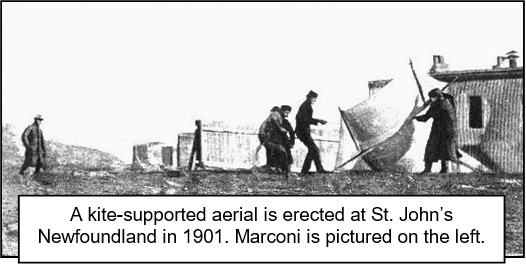
xxxxxBut the big and decisive break through came in December 1901. It was then that a signal, sent out from Poldhu in South Cornwall, crossed the Atlantic and was received, albeit faintly, at Saint John’s in Newfoundland, Canada, some 2,100 miles distant. Contrary to what many scientists had feared, the curvature of the Earth proved no hindrance to the passage of radio waves.
xxxxxThe impact of this accomplishment was immense. Here was a system that, given more funding, might well result in the establishment of a wireless communication service that covered the globe. It was an achievement that marked the beginning of a vast broadcasting industry worldwide, promoted in large measure by Marconi himself. In 1904 a commercial service was established for shipping and, three years later, a transatlantic service was in place for public use. Then, following his development of the horizontal directional aerial in 1905, and, seven years later, the introduction of the continuous wave system to boost output, transmission was substantially improved and made possible the first radio message from England to Australia in September 1918.
xxxxxIn the
meantime, the system was adopted by both the Italian and British
navies during he First World War (1914-
xxxxxForxhis contribution to the
invention and development of wireless telegraphy, many honours and
titles came his way. None was more prestigious than the Nobel
Prize for Physics, shared in 1909 with Karl
Ferdinand Braun (1850-
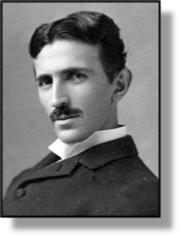 xxxxxThe legality of patents -
xxxxxThe legality of patents -
xxxxxTrouble
came to a head in 1900 when Marconi’s patent number 7,777, (the
famous 4-
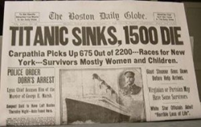 xxxxxIncidentally, in 1898
Marconi installed radio equipment on the royal yacht so that
Queen, Victoria, staying at Osborne House on the Isle of Wight,
could communicate with the Prince of Wales, and in 1901 President
Theodore Roosevelt sent a message of greetings to King Edward VII.
It was a wireless message to the police that led to the arrest of
the murderer Dr. Crippen when he arrived in Canada with his
mistress in 1910, and those who survived the sinking of the RMS
Titanic, two years later, owed their lives to the distress calls
made from the Marconi wireless equipment on board. ……
xxxxxIncidentally, in 1898
Marconi installed radio equipment on the royal yacht so that
Queen, Victoria, staying at Osborne House on the Isle of Wight,
could communicate with the Prince of Wales, and in 1901 President
Theodore Roosevelt sent a message of greetings to King Edward VII.
It was a wireless message to the police that led to the arrest of
the murderer Dr. Crippen when he arrived in Canada with his
mistress in 1910, and those who survived the sinking of the RMS
Titanic, two years later, owed their lives to the distress calls
made from the Marconi wireless equipment on board. ……
xxxxx…… Later in life, as a figure of international importance, Marconi became involved in the affairs of state. He became a member of the Italian senate in 1914, and served as the Italian delegate to the Versailles Peace Conference in 1919. He joined the Italian Fascist Party in 1923, and its leader, Benito Mussolini, was his best man at his wedding in June 1927. He received the hereditary title of Marchese in 1929, and was chosen as president of the Royal Italian Academy the following year.
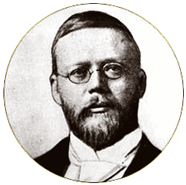 xxxxxAsxshown above, Marconi and Tesla were certainly not
alone in the development of wireless telegraphy and radio at this
time. The Canadian physicist Reginald
Fessenden (1866-
xxxxxAsxshown above, Marconi and Tesla were certainly not
alone in the development of wireless telegraphy and radio at this
time. The Canadian physicist Reginald
Fessenden (1866-
xxxxxInx1889 the Welsh electrical engineer William
Henry Preece (1834-
 xxxxxAnd worthy of note in this period was the advance
made in the production of the metal known as aluminium, discovered
by the English chemist Humphry Davy in 1808, and first produced by
the Danish physicist and chemist Hans Christian
Oersted in 1825. Inx1886
the American engineer Charles Martin
Hall (1863-
xxxxxAnd worthy of note in this period was the advance
made in the production of the metal known as aluminium, discovered
by the English chemist Humphry Davy in 1808, and first produced by
the Danish physicist and chemist Hans Christian
Oersted in 1825. Inx1886
the American engineer Charles Martin
Hall (1863-
Vc-


